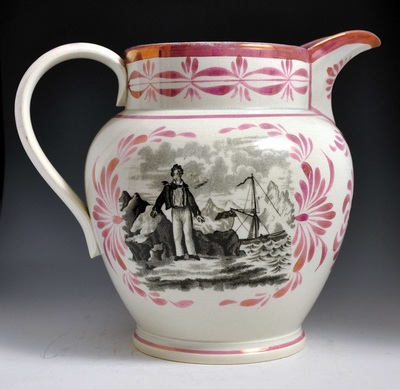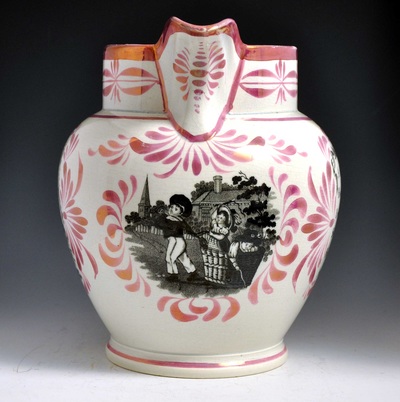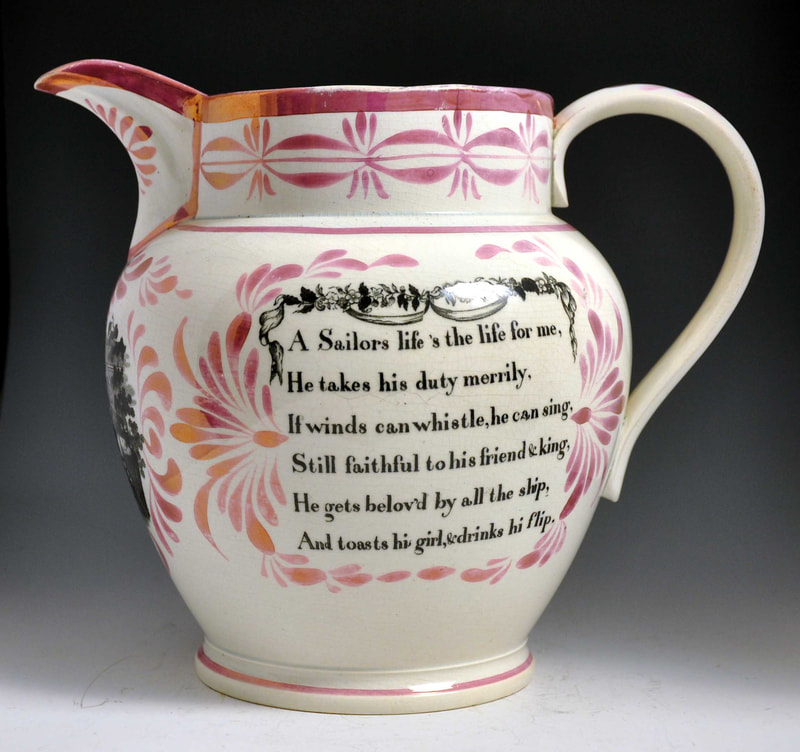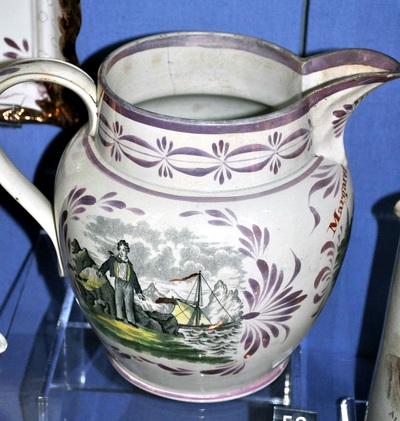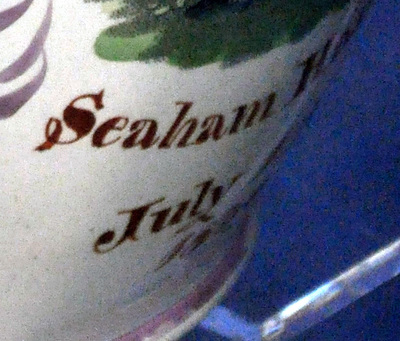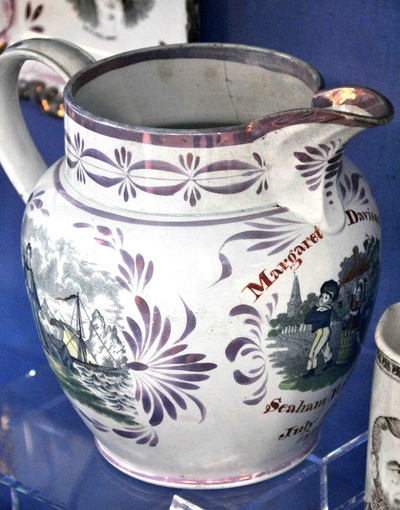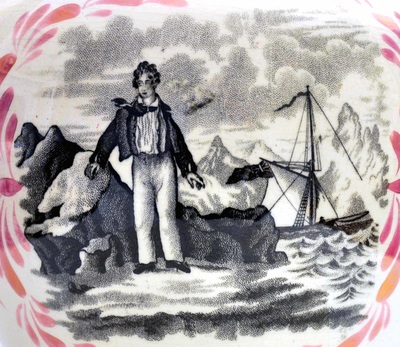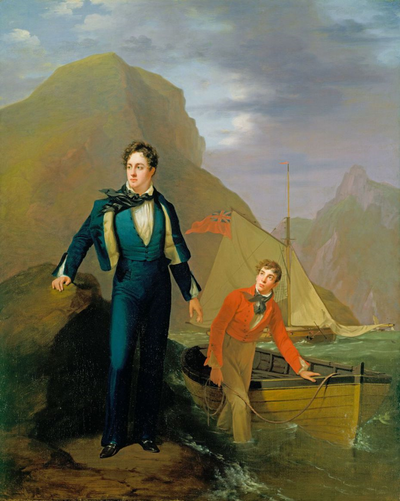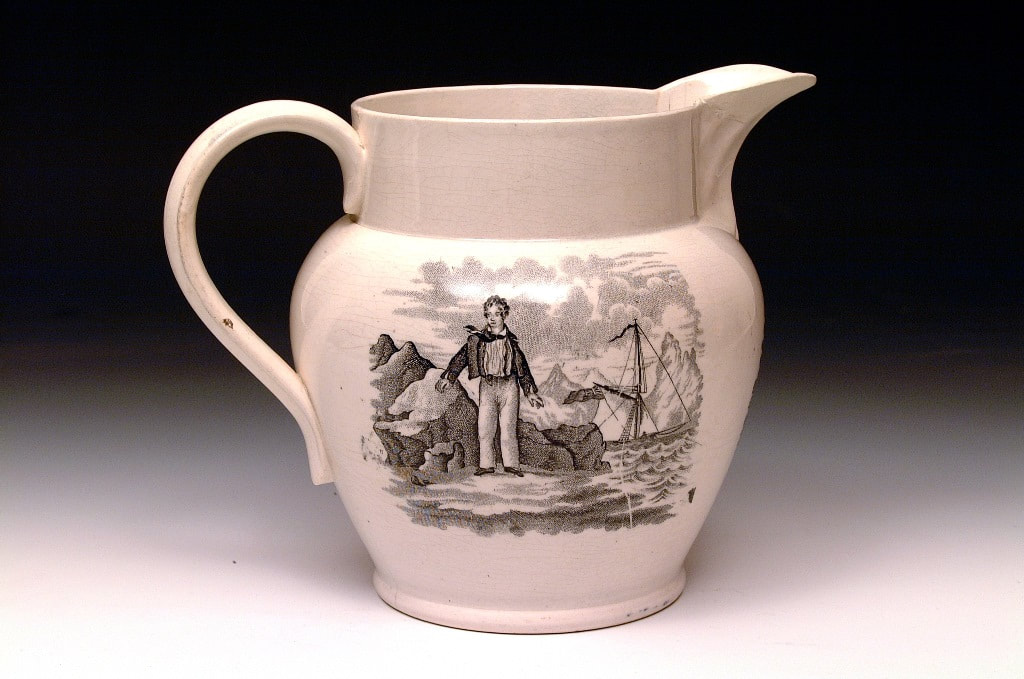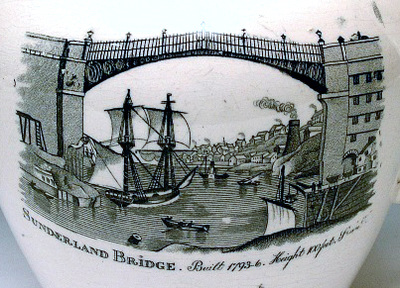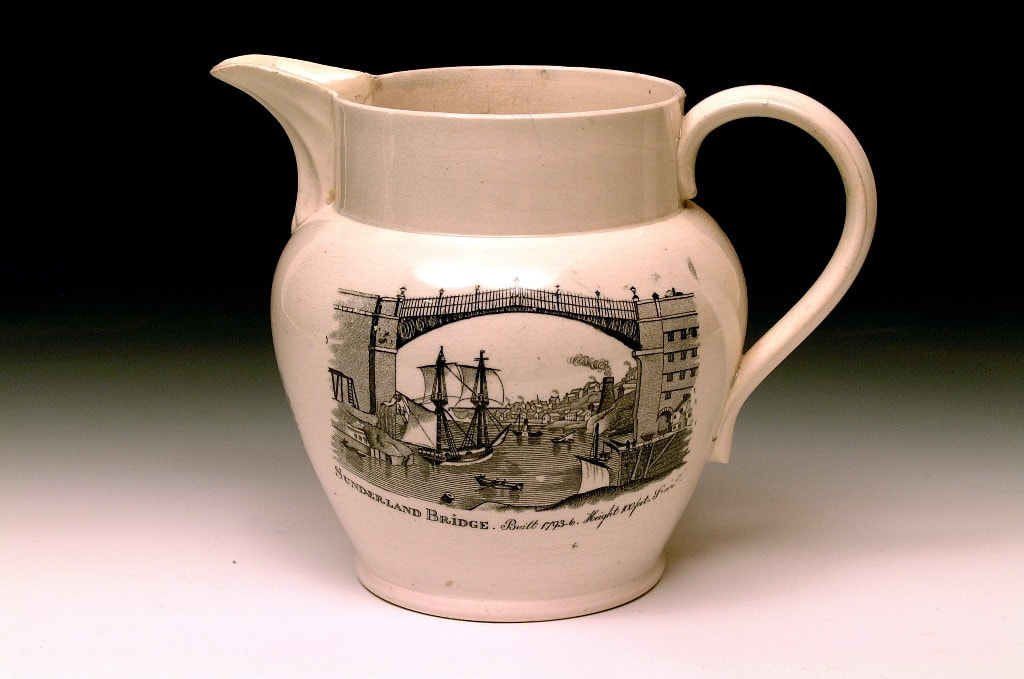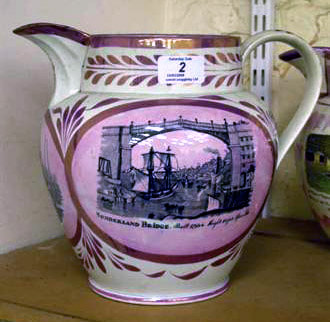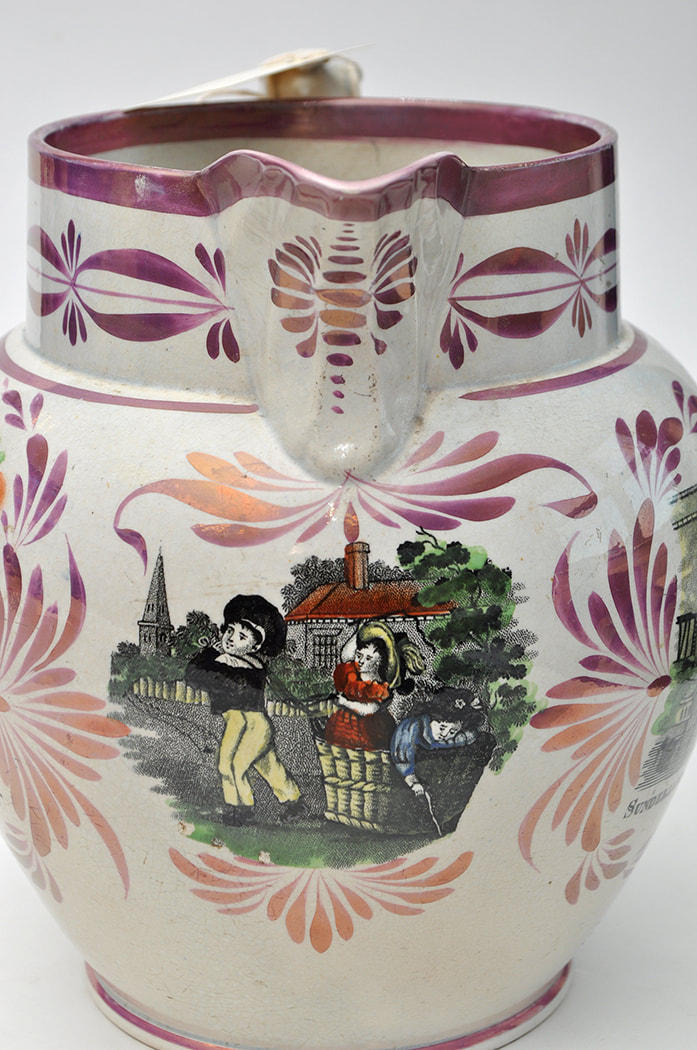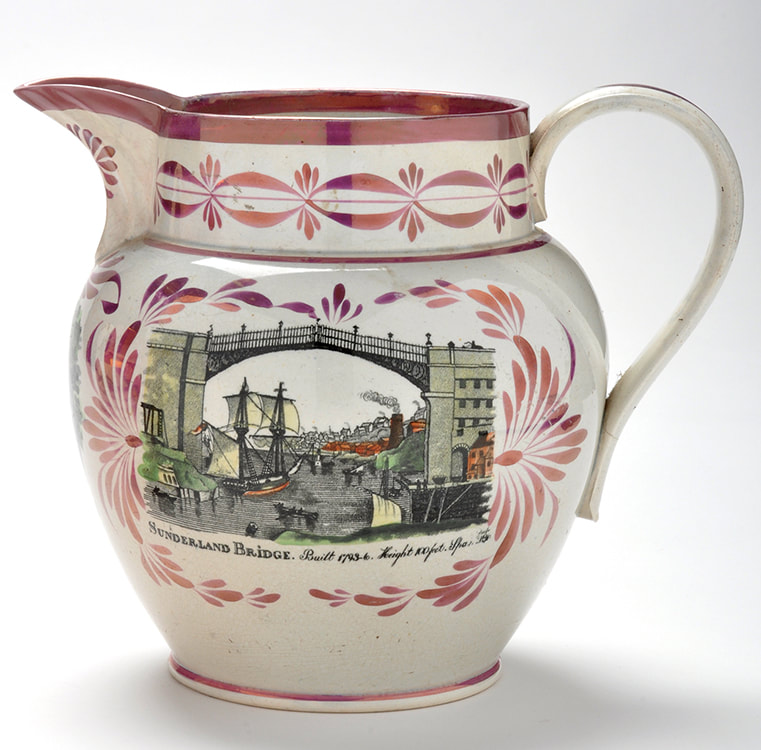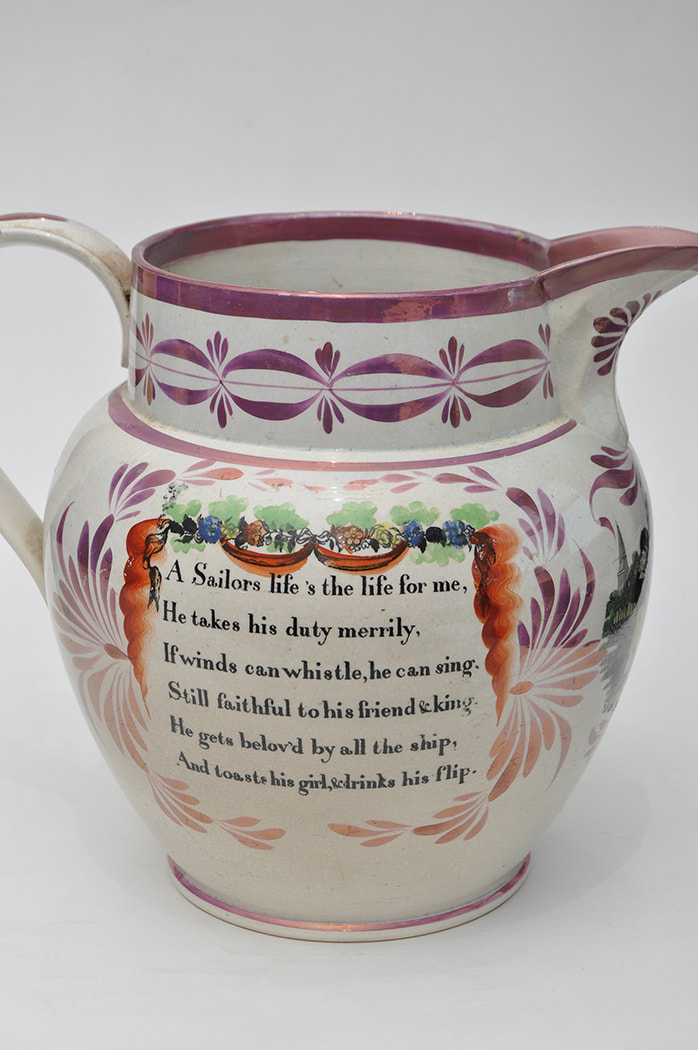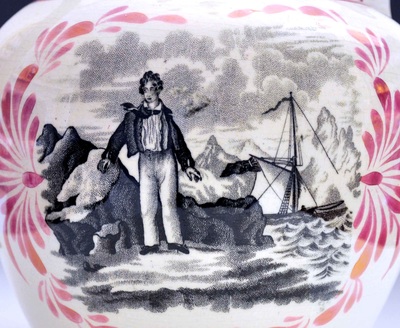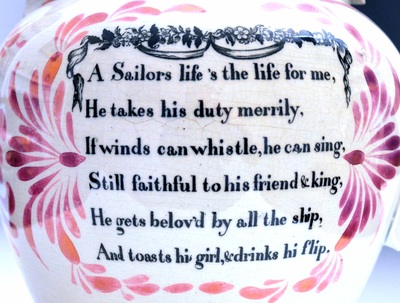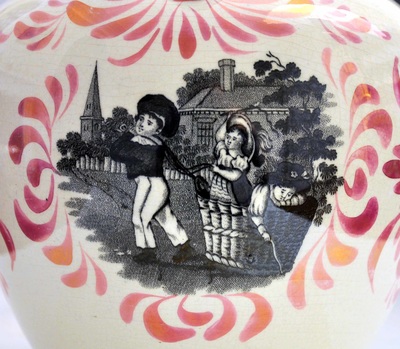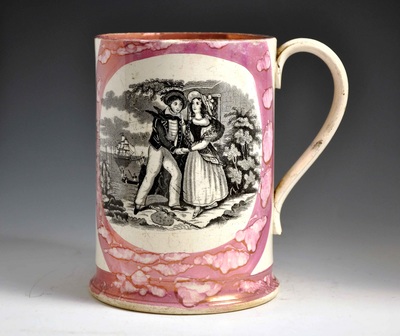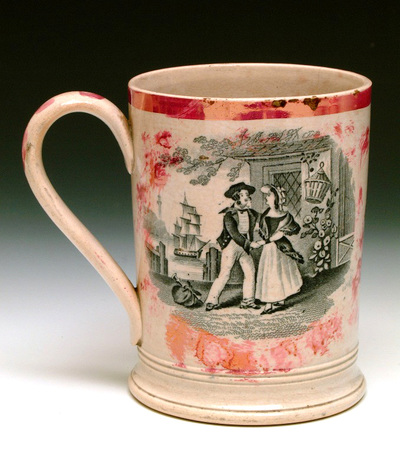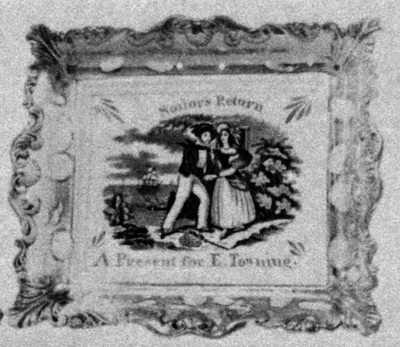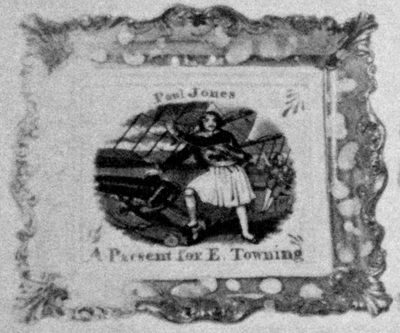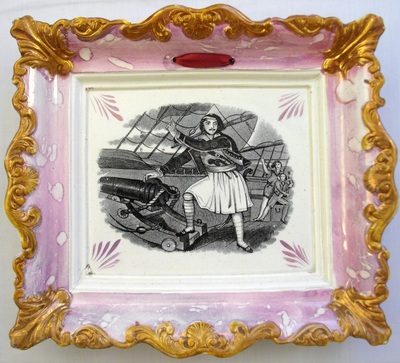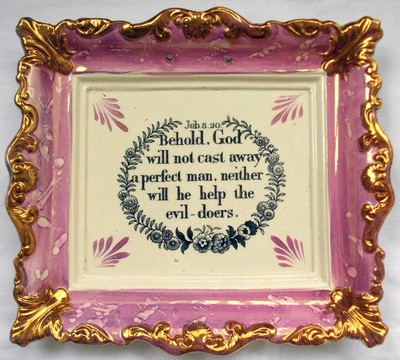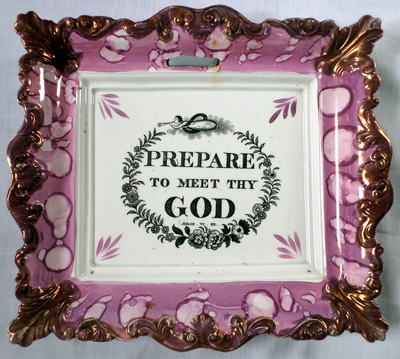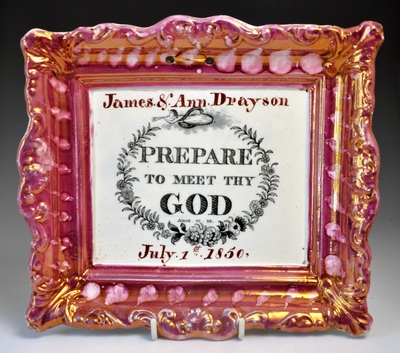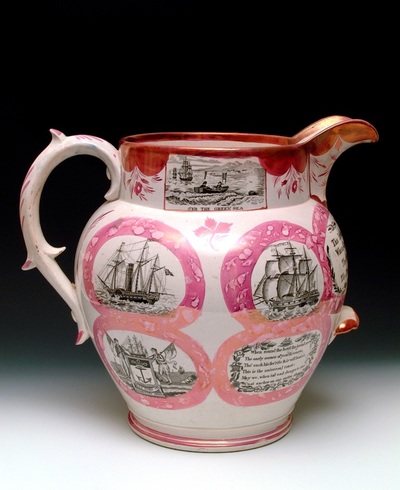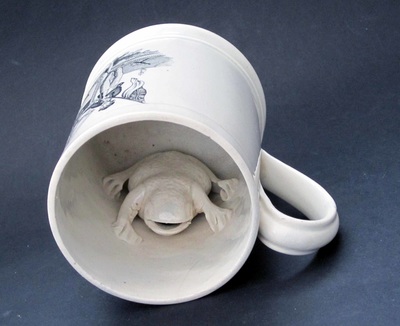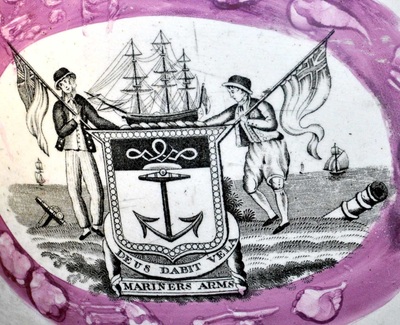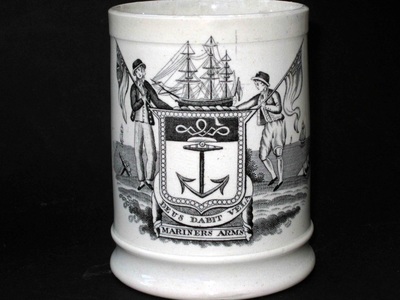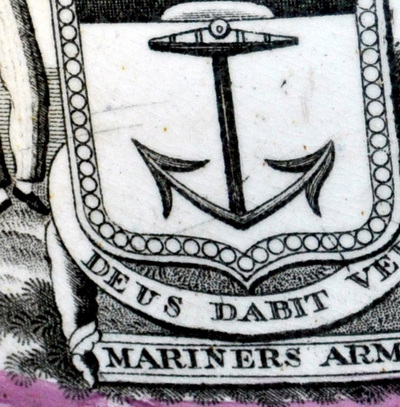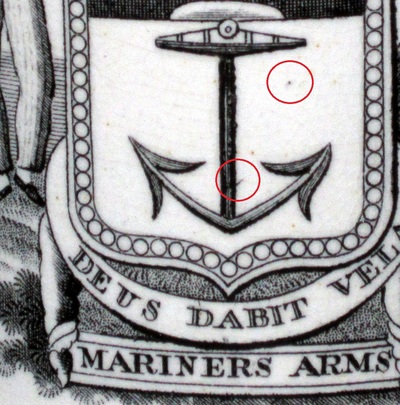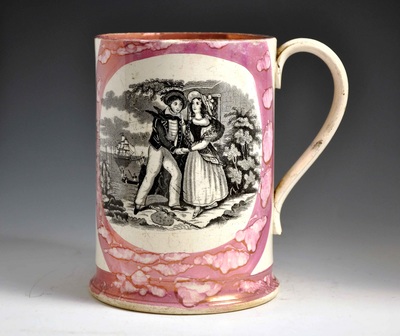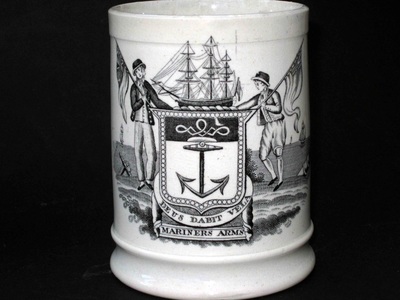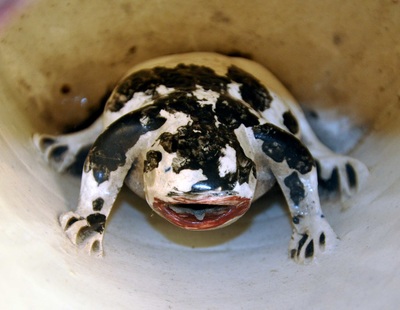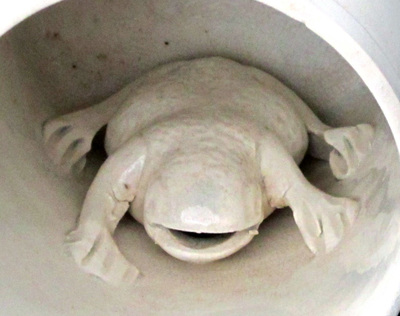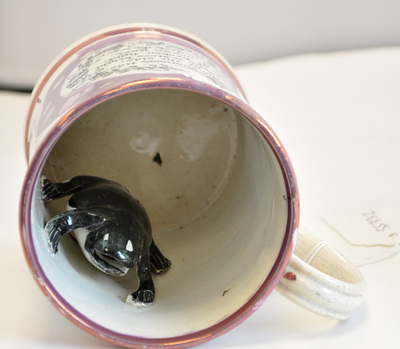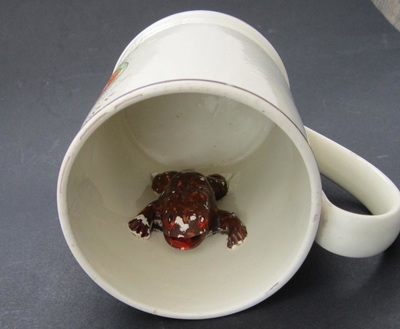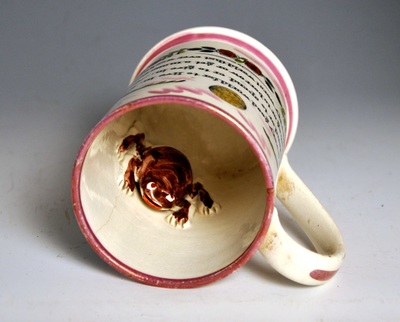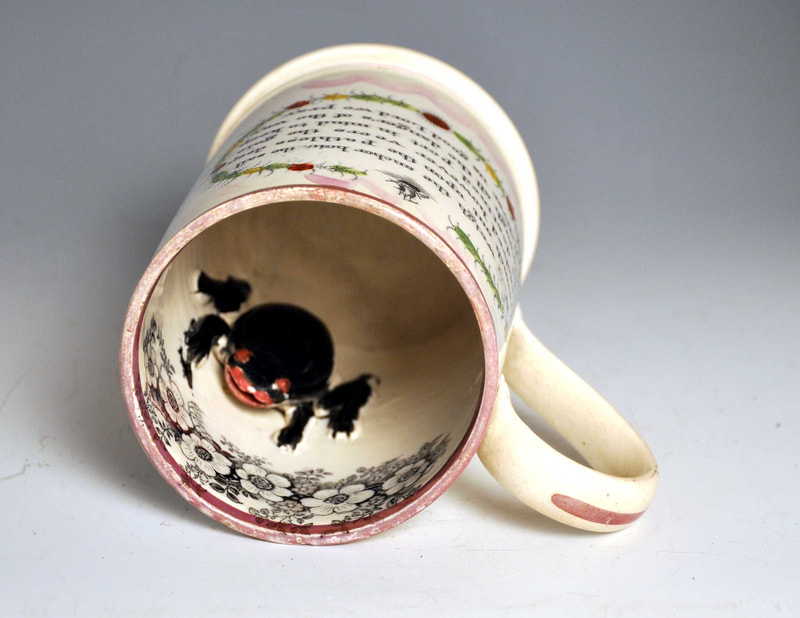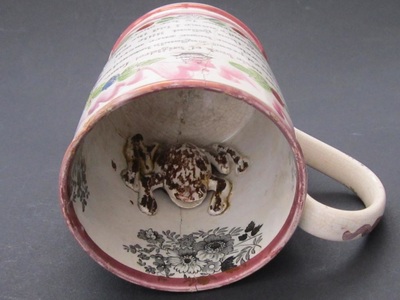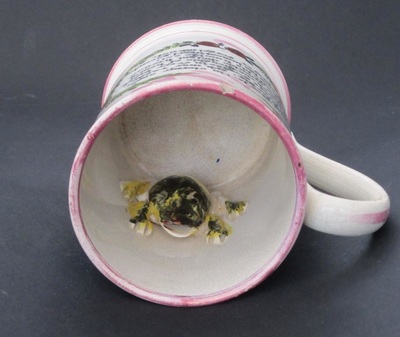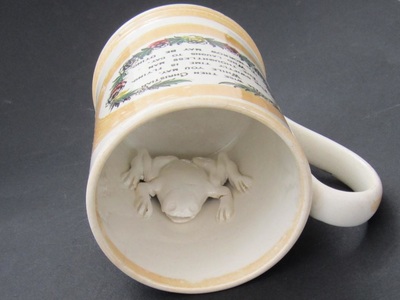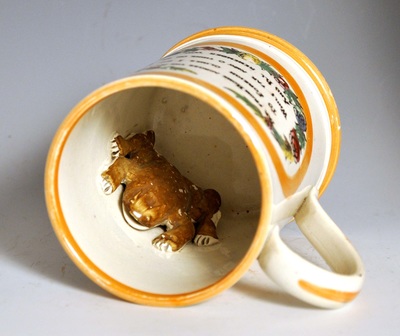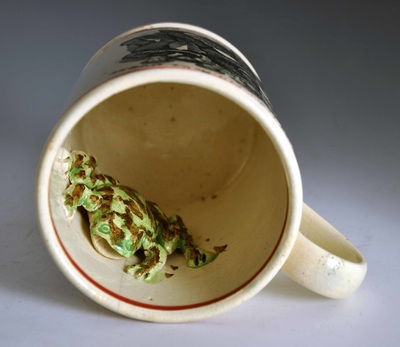|
The jug below is attributed to Seaham Pottery, and has very different decoration to the items I've written about so far. It is attributed to Seaham on the basis of a similar jug, in the Sunderland Museum displays, with the inscription 'Margaret Davison', 'Seaham Harbour' and the date 'July 1829'. That's not quite the end of the story though, because the Seaham Pottery wasn't built until 1836. So: either the jug was made at another pottery in 1829 before the Seaham Pottery was built; or the jug was made by Seaham Pottery at a later date for Margaret, perhaps as a birthday gift. The Byron transfer is after a painting of the poet, with his servant Robert Rushton, by George Sanders (1774–1846) in the Royal Collection. There's a copy of the painting at Newstead Abbey, Lord Byron's home. (As discussed before, Byron was married in Seaham in 1815, so has a local connection.) Please see Ian Holmes' site for two mugs with the transfer. The Byron transfer is also found on items with a distinctive view of the Sunderland Bridge. In Baker it is listed as view number 5, with a note about the paddle steamer in the background. The jug above is undecorated, and was likely sold as a factory second. Often these undecorated items have firing cracks or flaws. The items below are more typical with the elaborate lustre decoration associated with these Seaham-attributed jugs. If you have a similarly decorated item, please get in touch. If we could find another with a dated inscription, we might get a step closer to proving these items were made at Seaham Pottery after 1836. P.S. Norman Lowe has done some digging in the census records and made some interesting discoveries.
Taking all of that into account, it seems possible, perhaps even probable, that the jug was given to Margaret on her 21st birthday in 1850. William Davison is recorded as being a dock pilot born in Monkwearmouth in 1826. Aged 24 in 1850, he would have worked as a seaman, going out to meet incoming ships and navigating them into the harbour. So perhaps neither William nor Margaret had much interest in the poetry of Byron. For them, the untitled image would have been of young William standing on the shore. At this stage in their relationship, the other transfers on the jug, regarding the sailor's life, and young children playing, would also have had personal poignancy. All this considered, the Seaham attribution now seems more secure. The jug would have been made around the time the pottery changed hands. Walker sold the premises at an auction on December 11th, 1850. R.C. Wilson then ran the pottery from 1850 to 1852. So my money is on the jug being made at the end of Walker's ownership.
0 Comments
11/18/2016 1 Comment The Seaham frogThanks, once again, to Norman Lowe for getting in touch regarding my recent posts. In my last post I wrote about two frog mugs, with variations of the Sailor's Return transfer. Both have been attributed to Seaham. However, the one below right, from the Sunderland Museum collection, has lustre decoration similar to marked items from Thomas Ainsworth's Stockton Pottery. As you are probably bored of hearing by now, the transfer on the left mug below, also appears on a plaque with the inscription 'A Present for E. Towning'. Norman did some digging in the census records and writes 'Interestingly there was an Elizabeth Towning born 1860 in Stockton!' So is it possible that the items above were all made in Stockton, and not Seaham, after all? The Stockton Pottery was founded in the 1840s and closed in 1901, so was certainly turning out wares in 1860. Moore's Pottery was mass-producing similar larger-sized rectangular plaques in the 1860s, so the style of mould might fit the date. However, I think 1860 is too late for the plaques above. Take a look at the first three plaques below. The Seaham Pottery was producing identical large and similarly decorated religious verse plaques at the time the E. Towning plaques were made. We know that by 1850 the pottery had ceased making these plaques (the religious ones at least), and the copper transfer plate had found its way to John Carr's Low Lights Pottery in North Shields. The final plaque below, although unmarked, has Carr in it's DNA. The lustre decoration and distinctive red inscription, combined with the smaller mould, scream Carr (marked examples exist). What's more, the plaque is dated July 1st, 1850. The quality of the later examples of the Carr verse plaques is poor, with the transfer imprints looking faint and worn, so we can be sure that the 'Seaham' plaques came first, and pre-date July 1st, 1850. So the E. Towning born in Stockton in 1860 is highly unlikely to be the person celebrated on the plaques. Norman has, however, come up trumps in finding a link between the Sailor's Return transfer, and the large dated (1847) Seaham jug in the Sunderland Museum (below left). He owns a frog mug (below right) with the same Mariners' Compass transfer as the signed jug. Note the two blemishes circled in the final detail below, which appear on both the jug and the mug. So if we're now sure that Norman's frog mug is Seaham, how does the frog in his mug compare with the one in my Seaham-attributed mug with the Sailor's Return? My frog is on the left below, and he's an ugly brute, with traces of enamel decoration. However, I'm happy that they are a perfect match (click on the images to enlarge and move between them). There are slight differences where the potter has used a tool to bind the limbs of the frog to the inside of the mug, but their bodies appear to be from the same press mould. Note the moulded eyes on the sides of the frogs' heads. N.B. the frog takes up more space in Norman's smaller mug. For those doubters who think all frogs look alike, take a look at the variety of Sunderland frogs below. The first, attributed to Newbottle, is the closest match, but it has smooth, rather than pitted, skin. I've e-mailed the Sunderland Museum to see if I can get a photo of the frog in the other frog mug at the start of this post. Although the mug is attributed to Seaham, it has decorative features associated with Stockton. A look at its frog might help move the attribution on. For any diehards who have read this far, here's a sneak preview of my new Sunderland pottery transfers site. I haven't advertised its presence yet, as it is just a few jotted notes. P.S. Thanks to Shauna at the Sunderland Museum for getting back to me about the Seaham/Stockton 'Sailor's Return' mug in their collection. It doesn't have a frog, so we're no further forward I'm afraid. Although that's yet one more difference between the mug and its known Seaham counterparts.
|
AuthorStephen Smith lives in London, and is always happy to hear from other collectors. If you have an interesting collection of plaques, and are based in the UK, he will photograph them for you. Free advice given regarding selling and dispersal of a collection, or to those wishing to start one. Just get in touch... Archives
February 2022
AcknowledgementsThis website is indebted to collectors, dealers and enthusiasts who have shared their knowledge or photos. In particular: Ian Holmes, Stephen Duckworth, Dick Henrywood, Norman Lowe, Keith Lovell, Donald H Ryan, Harold Crowder, Jack and Joyce Cockerill, Myrna Schkolne, Elinor Penna, Ian Sharp, Shauna Gregg at the Sunderland Museum, Keith Bell, Martyn Edgell, and Liz Denton.
|
